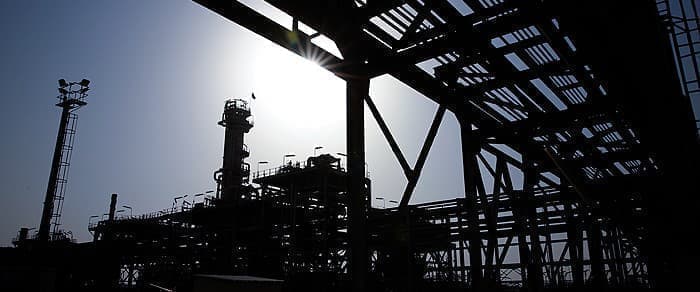Iran Could Produce Billions Of Barrels From 4 Little-Known Oilfields

▶Iran looks to ramp up production in four lesser-known oil fields
▶Iran’s Petroleum Ministry looks to use EOR-techniques to extract more oil from existing fields
▶Iran enjoys some of the lowest lifting costs per barrel in the world
Ahead of the new iteration of the ‘Joint Comprehensive Plan of Action’ (JCPOA) that Iran expects to have in place before 20 March 2022, the country is looking to increase crude oil output not just from its major fields in West Karoun and shared fields with Iraq and others, but also from lesser known fields that nonetheless have billions of barrels of oil reserves, largely untapped. There are additional benefits to developing these fields: first, virtually all of their output has a guaranteed buyer in China, in line with the 25-year Iran-China deal; and, second, news relating to these lesser known fields is less likely to reach the Iranian public, which reacted very negatively when news of the scope of the Iran-China deal was made public.
Such a site is Arvand, which is expected by the Arvandan Oil and Gas Production Company to see crude oil production reach 1.4 million barrels per day (bpd) by 2025. Located around 50 kilometres (km) south of Abadan in Khuzestan Province, Arvand is estimated to contain around one billion barrels of oil in place in three major layers – although all with an API gravity of between 39 and 43 - plus about 14 billion cubic metres of dry gas and 55 million barrels of gas condensate. Although there have been issues over which of the three countries – Iran, Iraq, or Kuwait - that contain parts of the reservoir has ownership over which parts of it, Tehran now believes that the matter has been largely settled, OilPrice.com understands from sources close to the Petroleum Ministry. “The section that was under dispute by Iran, Iraq, and Kuwait, is estimated to have reserves of 6 billion barrels, with at least 18 per cent of that deemed recoverable,” said one of the sources last week. “The [Petroleum] Ministry estimates that this section is relatively straightforward to develop, given the right equipment and technology, with an average cost recovery per barrel being at least 15 per cent lower than the lowest average recovery rate in the region – that is US$1.65 to US$1.70 per barrel - whereas the average low for Iran, Iraq, and Saudi Arabia is around US$2.00 per barrel,” one source said. “The NIOC estimates that crude oil production from this section could rise to 1.4 million barrels per day within the first five years of proper development and could be stabilised around that level, making it one of the biggest producing oil fields in the world,” he told OilPrice.com.
Another such site is Doroud, estimated to contain 7.6 billion barrels of oil in place, from which only around 1.6 billion barrels have been recovered so far, given its shutdown over the course of the 1980-1988 Iran-Iraq War. After this, the first big development effort came in 1997 when 42 wells were drilled in the field, comprised of 19 offshore and 23 onshore. Two years later, Iran signed an agreement with French energy supermajor Total (now TotalEnergies) for the development of Doroud but its plan to inject gas into the field in a specifically sequenced schedule did not happen and the project was halted. According to Iran’s Petroleum Ministry, a correctly sequenced programme of enhanced oil recovery (EOR) techniques across the site would mean another 1 billion barrels at least of oil being recovered quickly and, according to oil industry sources in Iran, the long-term figure could be another 2 billion barrels.
A similar EOR-based approach is being considered for the Mansouri oil field, located 60 km south of Ahvaz in Khuzestan Province, 50 km west of the Mahshahr Port, and 40 km east of the supergiant Ab Teimour field. The first well in the Mansouri field was drilled in 1963 in its Asmari reservoir, while the first well in its Bangestan reservoir began in 1974, with the processing of the Bangestan oil being transferred from the Ahvaz production unit to the Mansouri production unit in 1979. Although crude oil reserve estimates for the entire Mansouri field vary widely, the conservative view is that they are at least 3.3 billion barrels, with the next phase targets for crude oil production being at least 150,000 barrels per day from the Asmari layer and at least 75,000 bpd from the Bangestan layer. At the time that the original JCPOA was agreed in 2015, Mansouri was around 99 per cent completed, with a then-new production and desalting unit having made just over 98 per cent progress, whilst the engineering side stood at about 95 per cent completion.
At that time, the full development of Mansouri – along with several other of these supposedly lesser fields – was being discussed with Russia, with a view to various of its state oil and gas proxies taking them over from the National Iranian Oil Company or the National Iranian Gas Company. For Mansouri particularly, plans were well advanced for Lukoil to become involved, with the Phase 1 target output being 100,000 bpd and Phase 2’s 150,000 bpd, which still stands. At that point, production from the Asmari layer alone of Mansouri – Asmari being the top layer of three, with the other two being the Bangestan and Khami layers – averaged around 60,000, having hit 100,000 bpd at various points before then.
The trade-off for Lukoil, or whichever Russian firm took on the development as part of the rolling 20-year deal with the country, was to be that it received preferential treatment in applications for other Iranian oil fields and preferential terms under a modified ‘Integrated Petroleum Contract’ that was in the process of being constructed at the time by Tehran. At that time, in addition to Mansouri and Ab Teimour, Russia was in advanced negotiations with Tehran on returning to the Anaran exploration block in the west of the country, in which Lukoil – together with Norway’s Statoil – discovered major prospects in 2005. Lukoil had already put in around US$65 million before it had to pull out when sanctions were ramped up in 2011/2012, but the in-house Lukoil and Petroleum Ministry findings showed huge potential in the block, especially in the Azar and Changuleh West fields. Dehloran and Musian may also have surprised to the upside, and the initial projections that the recoverable reserves in the block were 1 billion barrels were increased by a factor of five within the Petroleum Ministry.




